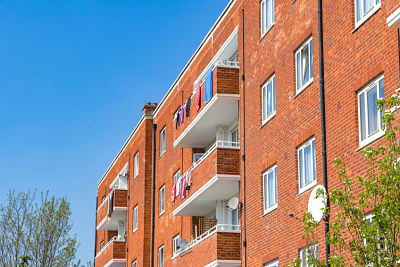
With demand for property outstripping supply in the UK and property prices consistently rising, real estate remains one of the most reliable and lucrative investment avenues.
If you’re looking for investment opportunities, property probably features high on your list. However, there are lots of different ways to make money from property, and it’s important to weigh your options before investing your cash. Buy-to-let and property flipping may be among the most well-known property investment strategies, but they are far from the only ones available.
If you’re uncertain about what other strategies are available or which is right for you, you’ve come to the right place. We’re here to give you the rundown on the ten most popular property investment strategies of 2024.
Learn how each strategy works to make an informed investment decision. Ultimately, the right strategy for you depends on your financial resources, business goals, available time, and appetite for risk.
Below, we’re going to explore the ten most popular property investment strategies in 2024. Discover the advantages and drawbacks and gain insight into the type of investor each strategy is best suited to. This guide will help you to identify which strategy is the best fit for your investment portfolio.
Buy-to-Let
Buy-to-let is the bread and butter of property investment and is the cornerstone of many investors’ portfolios. This strategy involves buying a property and then letting it out to tenants to generate a short-term monthly rental income. Beyond the immediate financial returns, buy-to-let also offers the potential for long-term capital gains if the property increases in value over time. The success of buy-to-let investments largely relies on the investor’s ability to choose the right property in the right location.
Advantages of buy-to-let
- Proven and popular strategy
- Accessible financing
- Semi-passive income potential
- Low barrier to entry
- Predictable returns
Drawbacks of buy-to-let
- Tax and financial considerations
- Regulatory burdens
- Comparatively lower yields
- Risk of voids
- Market volatility
Best suited to: Investors seeking a traditional and relatively stable source of income with the potential for long-term capital growth. Investors need to have the time to handle occasional tenant and maintenance issues.
Short-Term/Holiday Let
Short-term lets are buy-to-lets that offer short stays of between one night and six months. Many investors are now choosing to buy properties located in popular tourist destinations or holiday hotspots and let them out to visitors and holidaymakers through platforms like Airbnb. Just like your traditional buy-to-let, holiday lets can generate both a monthly rental income and, potentially, long-term capital gains. Attractive properties in prime locations can command very high rental prices, but it’s important to take into consideration seasonal fluctuations. Some holiday lets may experience frequent void periods out of season.
Advantages of holiday lets
- High rental charges
- Fewer regulations
- Minimal tenant interaction
Drawbacks of holiday lets
- Limited tenant screening increases risk
- Dependence on high occupancy
- Requires intensive management
- Requires active marketing
- Risk of off-peak void periods
Best suited to: Investors interested in earning higher returns who are willing and have the time to manage high tenant turnover. Suitable for those who can actively engage in marketing and manage season fluctuations effectively.
House in Multiple Occupation (HMO)
A house in multiple occupation (HMO) is a rental property occupied by three or more unrelated tenants. The occupants usually share facilities like the kitchen, bathroom, and living spaces. Investors can either buy an HMO or convert a property into an HMO. HMOs are popular investments as you can generally generate a higher rental yield by letting out individual rooms than you can by letting out the property as a whole. HMOs have become a popular living arrangement amongst many different demographics, from high-end professionals and graduates to students and benefit tenants. The demographic and location you choose will influence your investment’s potential profitability. HMOs generally require a bigger time commitment than your traditional buy-to-let as there are multiple tenants to manage.
Advantages of HMOs
- High rental yields
- Reduced financial risk from voids and arrears
- High demand
Drawbacks of HMOs
- More stringent regulations
- Higher tenant turnover
- Higher operational costs
- Increased management demands
Best suited to: Investors aiming for higher rental yields who can manage more complex tenant arrangements and stricter regulations. Ideal for those who have the time to handle frequent tenant interactions.
Purpose-Built Student Accommodation (PBSA)
PBSA is a type of housing built specifically for students. In 2024, the supply of PBSA does not meet the demand. PBSA consist of modern, self-contained studios or cluster flats with either shared or private kitchens, bathrooms, and living spaces. Investors can buy one or more apartments within the building to earn a passive rental income. The management company that they buy from handles everything else, from finding tenants to collecting rent and maintaining the property. This strategy is ideal for busy investors who have limited time and want to take a hands-off approach.
Advantages of PBSA
- High demand
- High rental income
- Hands-off, hassle-free investment
- Stable market
Drawbacks of PBSA
- Seasonal voids
- Management fees
- Limited capital growth
- High upfront cost
Best suited to: Investors seeking a hands-off investment that offers stable returns, particularly those looking to invest in an area with a high student population. PBSA investment is suited to those looking for a long-term, passive income without daily management hassles.
Commercial Property
A commercial let is a property that is let out solely for business purposes rather than residential use. In the UK, there are five types of commercial property: offices, retail, industrial, leisure, and healthcare. Like other types of rental property, commercial lets earn monthly rental income and also have the potential to earn capital gains. Commercial properties are also well suited to refurbishment. Commercial letting can be more difficult to get into as it usually requires a higher initial investment and is subject to stricter lending criteria than your average residential buy-to-let. However, commercial properties also often require less time and management than residential properties because they have much longer leases, and the landlord usually has fewer obligations when it comes to property maintenance.
Advantages of commercial property
- Stability
- Require less management
- Potential to save on maintenance costs
- Tax advantages
Drawbacks of commercial property
- Market dependency
- Tenant dependency
- Longer void periods
- Mortgage may be harder to secure
Best suited to: More experienced investors looking for long-term investments with stable tenants that require minimal management. Ideal for those with higher upfront capital and an understanding of the commercial market.
Social Property Investment
Social housing is rental properties that provide affordable and secure housing for low-income and vulnerable families and individuals. As the UK’s housing shortage worsens, it is becoming increasingly common for private investors to invest in social housing, such as council houses, housing association properties, temporary accommodation, and assisted living facilities. The leases on social housing are often longer than those on your traditional buy-to-let, providing investors with a steady and secure rental income. They are also an ethical investment, making them a good choice for investors interested in making a positive social impact by creating more affordable housing options.
Advantages of social property investment
- Steady income
- Positive social impact
- Government support
- Lower tenant turnover
- No maintenance and management costs
Drawbacks of social property investment
- Complex regulations
- Limited appreciation
- Limited control and flexibility
Best suited to: Investors motivated by social impact as well as financial return and willing to navigate complex regulations for a stable income. Suitable for those looking for a long-term, lower-risk investment.
Off-plan property investment
Off-plan property investment involves buying property while it is still in the planning or construction stage. Off-plan property is usually priced below market value and is in high demand, so it’s possible to get a good return on investment, but the strategy does carry some risk. Buying off-plan puts the investor at risk if the market experiences a downturn or if there are development delays or issues with the quality of the construction.
Advantages of off-plan property
- Discounted prices
- Capital appreciation potential
- Demand
- Flexible payment plans
Drawbacks of off-plan property
- Market risk
- Construction delays
- Issues with the build
Best suited to: Investors who are comfortable with navigating construction and market risks in exchange for potential high returns and capital appreciation. Ideal for those with patience who don’t mind adopting a long-term strategy.
Buy-to-Sell
The buy-to-sell strategy, often referred to as ‘flipping’, involves buying a property in need of renovation at a low price, doing it up, and then selling it on at a higher price and pocketing the profit. Flipping is a good strategy for quickly making a lump sum of cash. Effective flipping requires a robust understanding of market trends and local market demand, combined with the means to carry out fast and cost-effective renovations.
Advantages of buy-to-sell
- High ROI potential
- No tenants to manage
- Tax efficiency
Drawbacks of buy-to-sell
- Can be harder to get a mortgage
- Lack of passive income
- Requires strong project management skills
- Market dependency
Best suited to: Active investors who are willing to manage renovation projects and absorb market fluctuations. Suitable for those looking for short-term profits rather than long-term income.
Rent-to-Rent
Rent-to-rent is an investment strategy that involves renting a property from a landlord and then subletting it to a third party. While some landlords are happy for tenants to sub-let in return for taking over tenant management and guaranteed rental income, many landlords prohibit subletting in their tenancy agreement, so it’s important to get their explicit permission and negotiate a rent-to-rent agreement. The rent-to-rent strategy requires very little financial commitment or expenses and can generate cash quickly. However, it can be risky as the landlord is in control of the property.
Advantages of rent-to-rent
- High yield potential
- Low initial investment
- Quick cash flow
Drawbacks of rent-to-rent
- Dependency on landlord
- Regulatory and insurance challenges
- No equity growth
- Landlord maintains control of the property
Best suited to: Investors seeking quick returns with low initial capital outlay. They must be comfortable with managing tenant relations and willing to navigate the risks of an investment strategy that is heavily reliant on the landlord’s cooperation.
Property Crowdfunding
Property crowdfunding is an affordable property investment strategy that involves multiple investors pooling money together to buy a property, usually via an online property crowdfunding platform. Each investor then owns a share of the property while the online platform manages it. Property crowdfunding is a simple and affordable strategy that requires little input from the investor; however, the potential gains from crowdfunding are limited, and the investor usually has little or no control over how the property is managed.
Advantages of crowdfunding
- Accessibility
- Reduced financial burden
- Simplicity
- Diversification
Drawbacks of crowdfunding
- Limited control
- Capped potential gains
- Liquidity issues
- Dependence on platform stability
Best suited to: New or small-scale investors looking to enter the property market with limited funds and minimal responsibility for day-to-day management. Suitable for those comfortable with limited control and indirect involvement.
Each of the property investment strategies we’ve discussed offers its own unique advantages, from the reliable income provided by buy-to-let to the quick returns of flipping and the societal benefits of social investing. Now that you’ve got the lowdown on each strategy, all that’s left to do is decide which one best suits your investment goals and the current market conditions. Happy investing!



